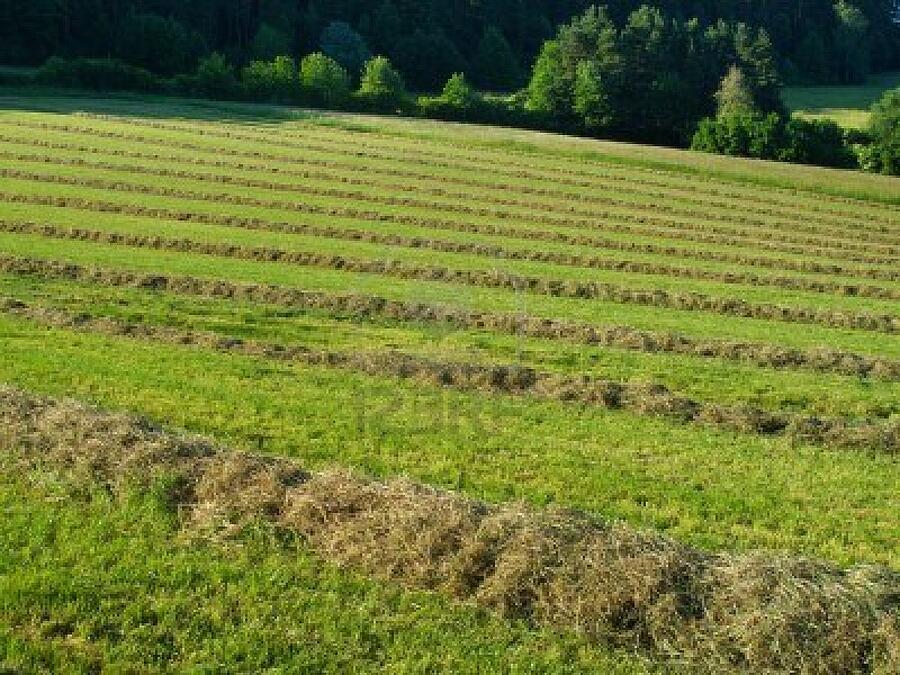Quick Tips for Measuring Moisture in Hay

 Experienced farmers know that when producing hay, controlling moisture is a must. Too little moisture, and the hay loses nutritive value; too much moisture and hay can combust.
Experienced farmers know that when producing hay, controlling moisture is a must. Too little moisture, and the hay loses nutritive value; too much moisture and hay can combust.
This is why top-notch hay producers carefully monitor the moisture content of their hay from start to finish. How can you ensure that your hay is at the right %MC for harvest, baling, and shipping/storage?
Here are a few quick tips to help you out:
1: Use Hay Moisture Meters with Extended-Length Probes
There are several ways to measure moisture in hay, such as by hand, via oven-dry tests, and by using hay moisture meters.
The problem with testing by hand is that it isn’t accurate—you never get a precise, traceable %MC reading. Having a "feel" for the right moisture level isn't enough.
Using oven-dry tests is perhaps the most accurate method, but it takes a considerable amount of time to take a hay sample, weigh it, dry it out completely in an oven, and weigh it again. In the time it takes to measure %MC of hay this way, the actual %MC of your hay in the field may have changed significantly because of sun or rain.
Using hay moisture meters remains the best way to balance the need for accuracy with the need for fast readings of hay’s moisture content. These devices can get quantifiable %MC readings in mere seconds from loose or baled hay. When testing baled hay, using extended-length probes is a must to get core moisture readings.
2: Take More Than One Reading for Baled Hay
Even tightly-packed hay bales can have empty spots while other spots are extra-dense. This can throw off the accuracy of any single reading.
To make your reading results more accurate, try taking several readings in each bale. After one reading is done, pull out the probes and reinsert them from a different angle to take the next reading. Doing this several times and then averaging the results increases the reliability of your moisture reading.
3: Use the Right Probe for Hay in the Field and in the Bale
Measuring moisture in a hay bale is a different task from measuring moisture in the windrow. When measuring moisture in a bale, it’s best to use long reinforced probes that are at least 10” long.
When measuring loose hay in the windrow, a probe with multiple pin tips such as Delmhorst’s #831 probe is better to use.
Using the right type of probe increases accuracy and ease of use for your hay moisture meters.
4: Make Sure to Clean Meter Probes Regularly
Moisture meter probes use the property of electrical resistance to measure moisture. Dirty or damaged probes may not be as accurate as clean ones.
Because of this, it’s important to clean and safely store your hay moisture probes between uses. This will not only help improve the reliability of your moisture readings, it will help prolong the useful life of your meter.
5: Run Calibration Checks
Even the best-maintained moisture meters may lose accuracy over time. This is why you should run a calibration check on your moisture meter at least once every time you harvest hay.
There are several ways to check meter calibration, including:
- Using a moisture content standard
- Using a built-in calibration check
- Using a reference meter
Of these three methods, the built-in check is the fastest and most convenient, but not all meters have this capability.
6: Know What Your Target Moisture Content is
The ideal moisture content of hay can change depending on a couple of factors, such as the type of forage you use for hay, whether or not you’ve applied preservatives, and what kind of baler you’ve used.
Shape and size of your hay bales can have a particularly large impact on moisture needs for your hay.
Generally speaking, small square hay bales have an ideal moisture content of between 18 and 20 percent. Large square bales have an ideal moisture content between 12 and 16 percent. Round hay bales should have a moisture content around 15 percent.
To adjust these values for any preservatives you’ve applied to the hay, you’ll have to consult with your preservative’s manufacturer. Knowing what your target moisture content value is can help you better manage moisture for your hay in the field.
These are just a few of the tips for measuring moisture in hay during harvest season. Check out some of our other hay resources here for more advice and tools.
Subscribe to Our Blog
Post Related

Moisture Levels During Hay Harvest and Storage


